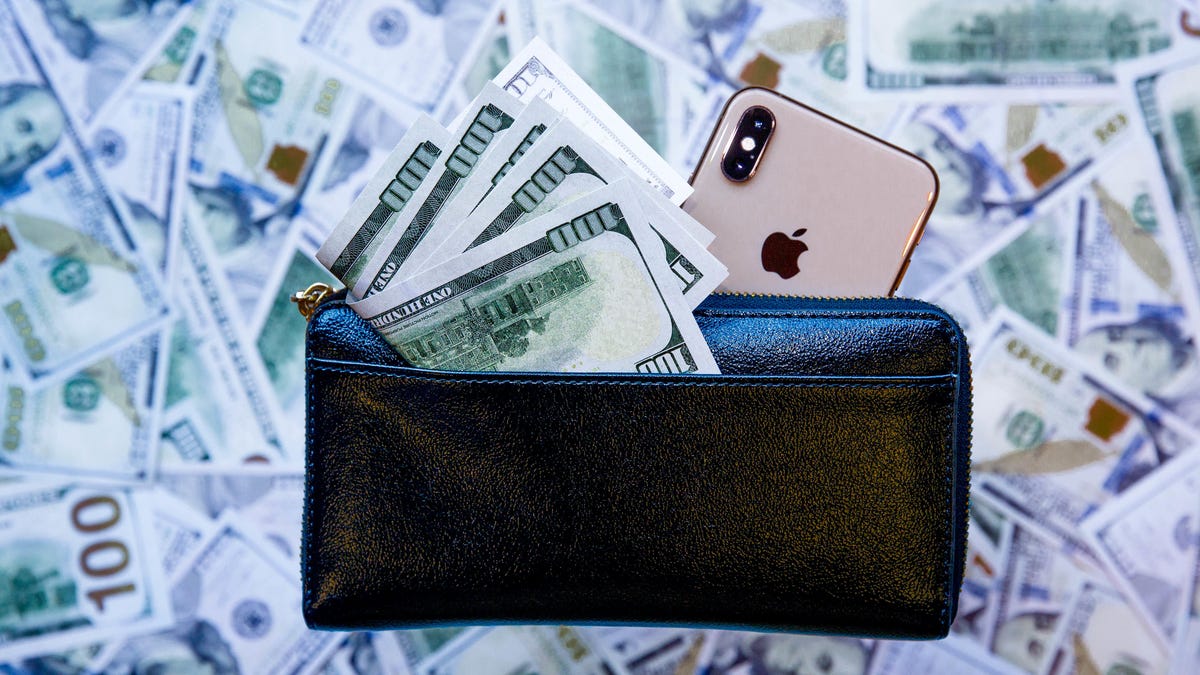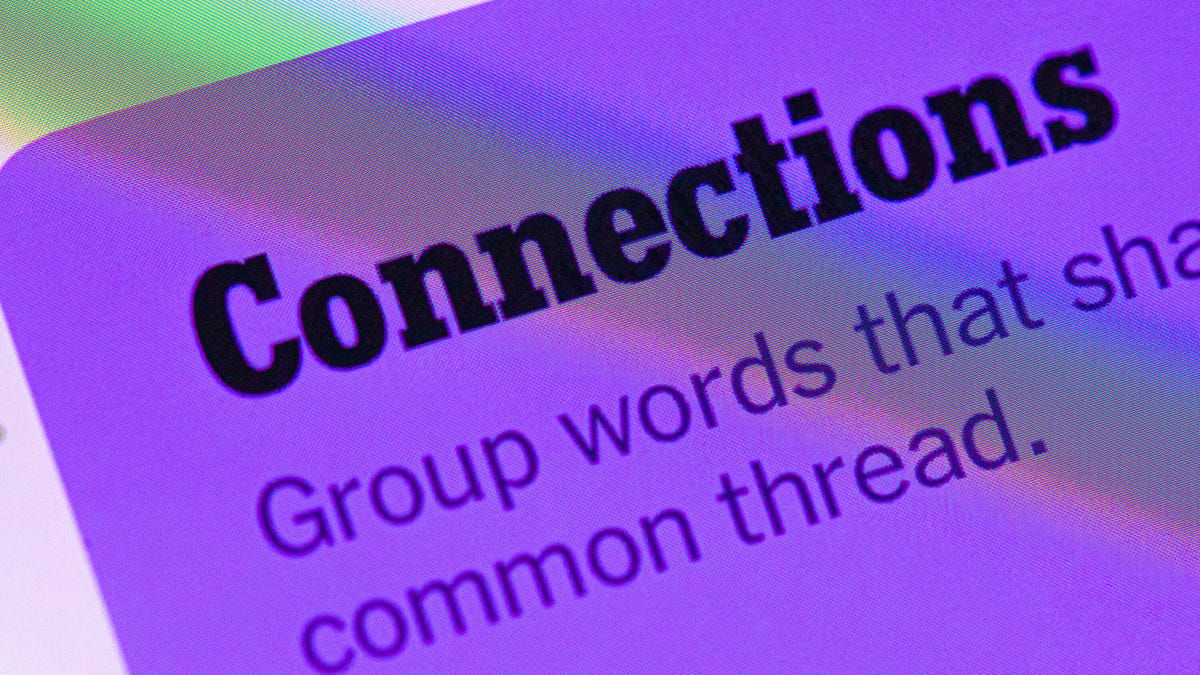Technologies
Smart Ways to Sell Your Old iPhone
Here’s how to get maximum profit to help subsidize a new iPhone.

This story is part of 12 Days of Tips, helping you make the most of your tech, home and health during the holiday season.
If you were tempted to treat yourself to the latest iPhone this Christmas or you plan to gift one to someone else in your family, you might be wondering what the most cost-effective way to do it is. Saving as much money as possible is paramount if you’re wanting to regularly upgrade to the best iPhone which is why subsidizing your next phone by selling your current one is such a great idea. But how do you get the most money back for your existing device?
Well, there are numerous ways to trade in an old iPhone and earn hundreds toward your new one, but each option has its own list of pros and cons. Fret not, though, as we’re here to help guide you through the process. We’ve put together a list of the best places to sell, so you can work out the best iPhone deal for you. Below, you’ll find three different ways you can make some cash, as well as when to make the sale and what you can expect from the process.
1. Sell it to a buy-back service
Looking for a quick and easy option? Consider selling your old device to a buy-back service. Although it’s not entirely without risk — if the old iPhone isn’t in the condition you said it was, for example if it is a broken iPhone, you may not get the full value quoted by the buyer — it does minimize the time and hassle, especially compared with trying to sell it yourself on, say, eBay or Craigslist.
There are traditional trade-in options like those offered by Apple and Best Buy (see the next section), and then there are buy-and-sell marketplaces like those listed below. Before you spend a lot of time hopping from one to another to get quotes, head to Flipsy, which compares US trade-in values at multiple buy-back stores. It shows you the payment methods, price-lock duration (that’s how long you have before you need to send the phone in) and price based on the condition of the old device. (Because each buyback program and store is little different when it comes to «condition» definitions, Flipsy doesn’t drill down beyond phone model, carrier and storage.) SellCell is another price-comparison service for anyone looking to score top dollar for an old iPhone.
If you’d rather check out some individual marketplaces yourself, below are a few options that are worth a look. The sample quotes are based on iPhone 13 trade-ins for «good» condition devices in December 2022 and were correct at the time of writing.
An honorable mention goes to Swappa, which has a sky-high TrustPilot score (4.8) but isn’t really a buyback service. Rather, it’s a marketplace designed to connect buyers and sellers. Think eBay, but with a focus on devices like your iPad, iPhone or other Apple product. To list your older iPhone (which doesn’t guarantee a sale), you must first create a Swappa account and then connect a PayPal account. You also set your asking price, which necessarily includes a sale fee, but not any additional PayPal fees that may apply.
Worth the extra effort? Perhaps: Swappa recommended a sale price of $646 for my iPhone 13, while noting that the same phone had recently sold for $596 — still higher than most buy-back services and more than enough extra to put towards a couple of new iPhone cases for your next phone. But a marketplace is almost always going to net you a higher profit (see below).
2. Trade in for credit toward a new one
Want to cut out the middleman, so to speak? You can start by going back to the source. That can be either the manufacturer or a big-box retailer, the largest of which generally offer solid trade-in options for a new device. Consider two of the biggest fish in the pond: Apple and Best Buy.
The key takeaway here: Shop around. There are plenty of services with program options that will buy your old iPhone or take it in trade, but you might do better selling it yourself.
3. Sell it yourself
Selling an iPhone yourself will usually net you the most profit, but it’s not without risks and hassles.
When to sell your old iPhone
Your old phone is losing market value by the day, so the best time to sell it is always as soon as possible. It’s estimated that within 24 hours of a new iPhone’s unveiling, your old phone loses up to 30% of its trade-in value so you can try to time it right and sell it in the weeks leading up to an iPhone event if you’re smart.
One concern is that if you sell your old smartphone immediately, you’ll be phoneless until the new one arrives. Thankfully, many of the aforementioned buy-back and trade-in services give you a grace period (also known as a «price lock») of up 30 days after selling your phone before you have to send it in — time enough, hopefully, to purchase and receive your new phone and get everything migrated over (including the SIM card — don’t forget that!). Since the iPhone 14 is just a few months old, this is less of an issue currently.
What to know before you sell your old iPhone
Whether you sell by yourself or trade to a third-party company, make sure you prep your iPhone properly before selling it
. Here are some tips:
- Back it up: Back up all of your important data — including contact, photos, videos and apps — using Apple’s iCloud service or a third-party cloud storage service.
- Turn off Find My: Apple’s Find My app (formerly known as Find My iPhone) is a security feature that must be turned off before you sell your phone — or nobody else will be able to use or reset it. To turn off Find My, open the Settings app on your iPhone and go to Settings > [Your username] > Find My and turn it off.
- Wipe it: Sign out of all apps, services and connected accounts (like your iCloud account). Then, open the Settings app and go to General > Reset > Erase All Content and Settings to erase everything from your iPhone. Once this is complete, you can also go to General > Reset > Reset All Settings to restore the iPhone to factory settings, just in case.
- Remove the SIM card: Don’t forget to pop out your SIM card, which you’ll likely need for the new phone to keep your existing number and service.
You’ll receive the most money for your phone if it’s in tip-top shape, but you can still do well if it’s in «good» condition: No cracked screen, no big dents or scratches in the casing, no water damage, and everything working well (meaning the phone turns on, holds a charge and so forth).
If your phone is damaged, you can probably still get something for it, even if the device doesn’t turn on. It’s not worth it to repair a cracked phone screen before you sell, but if your screen is only slightly damaged — a small hairline crack in the corner, for example — you may want to sell it on your own instead of trading it in. An individual may be willing to overlook superficial screen damage for a good price.
More from 12 Days of Tips
Technologies
Today’s NYT Connections Hints, Answers and Help for Dec. 24, #927
Here are some hints and the answers for the NYT Connections puzzle for Dec. 24 #927

Looking for the most recent Connections answers? Click here for today’s Connections hints, as well as our daily answers and hints for The New York Times Mini Crossword, Wordle, Connections: Sports Edition and Strands puzzles.
Today’s NYT Connections puzzle is kind of tough. Ooh, that purple category! Once again, you’ll need to look inside words for hidden words. Read on for clues and today’s Connections answers.
The Times has a Connections Bot, like the one for Wordle. Go there after you play to receive a numeric score and to have the program analyze your answers. Players who are registered with the Times Games section can now nerd out by following their progress, including the number of puzzles completed, win rate, number of times they nabbed a perfect score and their win streak.
Read more: Hints, Tips and Strategies to Help You Win at NYT Connections Every Time
Hints for today’s Connections groups
Here are four hints for the groupings in today’s Connections puzzle, ranked from the easiest yellow group to the tough (and sometimes bizarre) purple group.
Yellow group hint: Cash out.
Green group hint: Chomp
Blue group hint: Walleye and salmon.
Purple group hint: Make a musical sound, with a twist.
Answers for today’s Connections groups
Yellow group: Slang for money.
Green group: Masticate.
Blue group: Fish.
Purple group: Ways to vocalize musically plus a letter.
Read more: Wordle Cheat Sheet: Here Are the Most Popular Letters Used in English Words
What are today’s Connections answers?
The yellow words in today’s Connections
The theme is slang for money. The four answers are bacon, bread, cheese and paper.
The green words in today’s Connections
The theme is masticate. The four answers are bite, champ, chew and munch.
The blue words in today’s Connections
The theme is fish. The four answers are char, pollock, sole and tang.
The purple words in today’s Connections
The theme is ways to vocalize musically plus a letter. The four answers are hump (hum), rapt (rap), singe (sing) and whistler (whistle).
Don’t miss any of our unbiased tech content and lab-based reviews. Add CNET as a preferred Google source.
Toughest Connections puzzles
We’ve made a note of some of the toughest Connections puzzles so far. Maybe they’ll help you see patterns in future puzzles.
#5: Included «things you can set,» such as mood, record, table and volleyball.
#4: Included «one in a dozen,» such as egg, juror, month and rose.
#3: Included «streets on screen,» such as Elm, Fear, Jump and Sesame.
#2: Included «power ___» such as nap, plant, Ranger and trip.
#1: Included «things that can run,» such as candidate, faucet, mascara and nose.
Technologies
Today’s NYT Mini Crossword Answers for Wednesday, Dec. 24
Here are the answers for The New York Times Mini Crossword for Dec. 24.

Looking for the most recent Mini Crossword answer? Click here for today’s Mini Crossword hints, as well as our daily answers and hints for The New York Times Wordle, Strands, Connections and Connections: Sports Edition puzzles.
Need some help with today’s Mini Crossword? I’m Irish-American, but yet 6-Down, which involves Ireland, stumped me at first. Read on for all the answers.. And if you could use some hints and guidance for daily solving, check out our Mini Crossword tips.
If you’re looking for today’s Wordle, Connections, Connections: Sports Edition and Strands answers, you can visit CNET’s NYT puzzle hints page.
Read more: Tips and Tricks for Solving The New York Times Mini Crossword
Let’s get to those Mini Crossword clues and answers.
Mini across clues and answers
1A clue: Wordle or Boggle
Answer: GAME
5A clue: Big Newton
Answer: ISAAC
7A clue: Specialized vocabulary
Answer: LINGO
8A clue: «See you in a bit!»
Answer: LATER
9A clue: Tone of many internet comments
Answer: SNARK
Mini down clues and answers
1D clue: Sharks use them to breathe
Answer: GILLS
2D clue: From Singapore or South Korea, say
Answer: ASIAN
3D clue: Large ocean ray
Answer: MANTA
4D clue: ___ beaver
Answer: EAGER
6D clue: Second-largest city in the Republic of Ireland, after Dublin
Answer: CORK
Don’t miss any of our unbiased tech content and lab-based reviews. Add CNET as a preferred Google source.
Technologies
Quadrantids Is a Short but Sweet Meteor Shower Just After New Year’s. How to See It
This meteor shower has one of the most active peaks, but it doesn’t last for very long.

The Quadrantids has the potential to be one of the most active meteor showers of the year, and skygazers won’t have long to wait to see it. The annual shower is predicted to reach maximum intensity on Jan. 3. And with a display that can rival Perseids, Quadrantids could be worth braving the cold to see it.
Don’t miss any of our unbiased tech content and lab-based reviews. Add CNET as a preferred Google source.
The show officially begins on Dec. 28 and lasts until Jan. 12, according to the American Meteor Society. Quadrantids is scheduled to peak on Jan. 2-3, when it may produce upwards of 125 meteors per hour. This matches Perseids and other larger meteor showers on a per-hour rate, but Quadrantids also has one of the shortest peaks at just 6 hours, so it rarely produces as many meteors overall as the other big ones.
The meteor shower comes to Earth courtesy of the 2003 EH1 asteroid, which is notable because most meteor showers are fed from comets, not asteroids. Per NASA, 2003 EH1 is a near-Earth asteroid that orbits the sun once every five and a half years. Science posits that 2003 EH1 was a comet in a past life, but too many trips around the sun stripped it of its ice, leaving only its rocky core. The Earth runs through EH1’s orbital debris every January, which results in the Quadrantids meteor shower.
How and where to see Quadrantids
Quadrantids is named for the constellation where its meteors appear to originate, a point known as the radiant. This presents another oddity, as the shower originates from the constellation Quadrans Muralis. This constellation ceased to be recognized as an official constellation in the 1920s and isn’t available on most publicly accessible sky maps.
For the modern skygazer, you’ll instead need to find the Bootes and Draco constellations, both of which contain stars that were once a part of the Quadrans Muralis. Draco will be easier to find after sunset on the evening of Jan. 2, and will be just above the horizon in the northern sky. Bootes orbits around Draco, but will remain under the horizon until just after 1 a.m. local time in the northeastern sky. From that point forward, both will sit in the northeastern part of the sky until sunrise. You’ll want to point your chair in that direction and stay there to see meteors.
As the American Meteor Society notes, Quadrantids has a short but active peak, lasting around 6 hours. The peak is expected to start around 4 p.m. ET and last well into the evening. NASA predicts the meteor shower to start one day later on Jan. 3-4, so if you don’t see any on the evening of Jan. 2, try again on Jan. 3.
To get the best results, the standard space viewing tips apply. You’ll want to get as far away from the city and suburbs as possible to reduce light pollution. Since it’ll be so cold outside, dress warmly and abstain from alcoholic beverages, as they can affect your body temperature. You won’t need any binoculars or telescopes, and the reduced field of view may actually impact your ability to see meteors.
The bad news is that either way, the Quadrantids meteor shower coincides almost perfectly with January’s Wolf Moon, which also happens to be a supermoon. This will introduce quite a lot of light pollution, which will likely drown out all but the brightest meteors. So, while it may have a peak of over 100 meteors per hour, both NASA and the AMS agree that the more realistic expectation is 10 or so bright meteors per hour.
-

 Technologies3 года ago
Technologies3 года agoTech Companies Need to Be Held Accountable for Security, Experts Say
-

 Technologies3 года ago
Technologies3 года agoBest Handheld Game Console in 2023
-

 Technologies3 года ago
Technologies3 года agoTighten Up Your VR Game With the Best Head Straps for Quest 2
-

 Technologies4 года ago
Technologies4 года agoBlack Friday 2021: The best deals on TVs, headphones, kitchenware, and more
-

 Technologies4 года ago
Technologies4 года agoVerum, Wickr and Threema: next generation secured messengers
-

 Technologies4 года ago
Technologies4 года agoGoogle to require vaccinations as Silicon Valley rethinks return-to-office policies
-

 Technologies4 года ago
Technologies4 года agoOlivia Harlan Dekker for Verum Messenger
-

 Technologies4 года ago
Technologies4 года agoiPhone 13 event: How to watch Apple’s big announcement tomorrow
